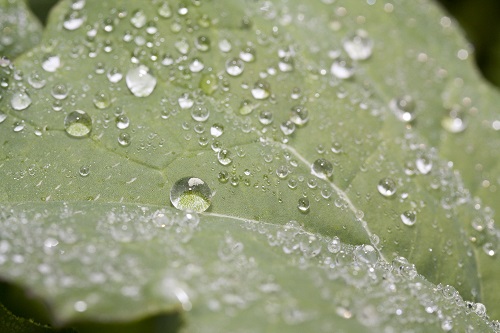Today is August 24, 2020 and this morning there was a change in the weather. It is the subtle changes we look for to plant our fall crops or gardens. When our weather begins to cool down over the next month, more and more farmers and gardeners will be going into their fields or gardens. Floridian gardeners, as a group, relish the fall season. Our gardens will be full of blooming annuals, delicious herbs, various vegetables, and several species of fungi and bacteria. Let’s take a closer look at our horticulture hygiene by examining fungi and bacteria.
The Offenders

These microscopic pathogens also appreciate these balmy, mild conditions. The temperatures are ideal, moisture is plentiful, and, most importantly, there are lots of human hands to move them about. Keeping your garden free of these little hitchhikers is dependent on how well you practice garden sanitation. Throughout the year, sanitation practices are important, but they are especially critical in the cooler parts of the year. With that said, several strategies will assist with the management of these pathogenic pests in your gardens.
First, bacteria, fungi, and viruses are a normal part of our subtropical climate. The same climate that blesses us with superior growing conditions, also provides for the vast diversity and proliferation of these minuscule baddies. Gardeners, in particular, are an exceptional vehicle to transport these organisms around the garden. For example, most gardeners will begin working bright and early this time of year. It would be difficult not to see why.
The mornings are cool, the plants look beautiful covered in dew, and most crops are ready for harvest. This sounds ideal, right? The problematic pathogens also agree. The cool temperatures foster strong, rapid growth, the dew drops and wet leaves provide the perfect infection points, and human hands provide free, easy movement between plants. This is why garden sanitation is vitally important for the health of your garden.
Sanitation is Prevention
With this in mind, the first step in garden sanitation is prevention. The outright exclusion of bacteria, fungi, and viruses can be exquisitely effective. The simple fact that the pathogen is not physically present in the garden is, in effect, interrupting the disease cycle. How does one exclude pathogens? It begins with disease-free seeds and transplants. When purchasing seeds, look for certified disease-free or trusted suppliers to ensure you are not inadvertently infecting your garden. While shopping for plants, thoroughly look over the plant and the roots. Avoid plants that have spotted leaves or stems, brown mushy roots, or that appear to be weak and spindly in growth. This preventative first step can go a long way in helping to exclude any pathogens seeking a new home. However, some plant diseases can be particularly sneaky and launch a stealth invasion of the garden.
Watch the dew droplets!

Consequentially, a new set of protocols is required to prevent and manage plant diseases that are already present in the garden. The first habit to adopt is to never work on or near plants that have wet surfaces. Bacteria and fungi have an uncanny ability to move freely in water droplets which allows for the rapid transmission of these diseases. Another strategy is to water early in the morning to minimize the amount of time the leaf surface is wet. Again, the longer the plant is wet, the more likely it is to become infected with a disease.
An extra thing to consider if there are diseases present in the garden, is the sanitation of the growing area and garden tools. All garden debris including fallen leaves, diseased plants, and picked weeds should be removed from the garden area. These can provide ideal habitats for some fungi and bacteria to develop if left unattended. Garden tools, like shears and pruners, should always be sanitized with rubbing alcohol or a flame before cutting a new plant. This helps to destroy any pathogens that can enter through pruning wounds.
Scouting helps find problems early

In conclusion, our subtropical climate (especially our “winter”) provide beautiful conditions to grow exceptional, lush gardens. These same conditions also provide for exceptionally lush bacteria and fungi which can invade our gardens. Prevention through disease-free transplants and seeds is the first line of defense against introducing and spreading plant diseases. Scouting your garden for abnormal appearances on the plants will help find problems early. Our U-Scout program has many photos, by vegetable type so you can become familiar with some of the symptoms or signs of disease. If that fails, resort to alternate strategies to limit the spread of these pathogens.
Allow for the plants to dry before working on or near them, water in the morning, remove all garden debris, and remember to sanitize all garden tools. These garden sanitation practices can go a long way in assisting with the management of plant diseases in the garden. Here are links for more details on Disease Management.
Article written by Mack Lessig, Community Garden Program Assistant
Questions: Call Mack Lessig or Lisa Hickey, Sustainable Food Systems Extension Agent at (941)722-4524. Check out the resources on our webpage. https://sfyl.ifas.ufl.edu/manatee/agriculture/vegetable–row-crops/
 0
0
